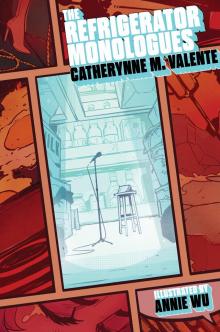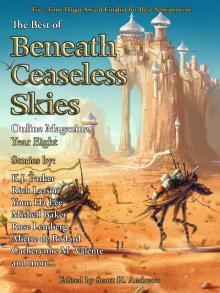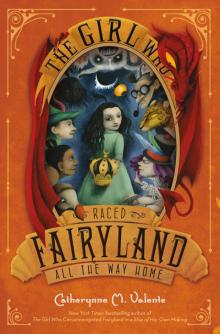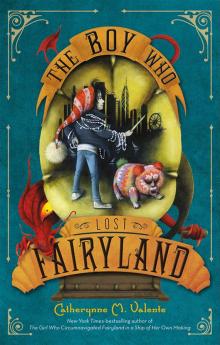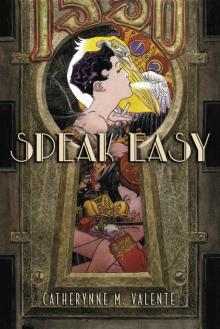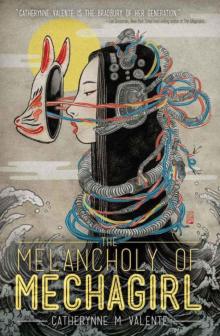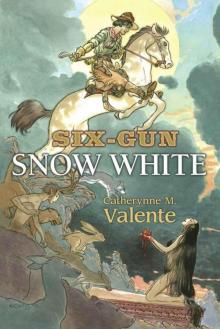


Inquisition
Green, Toby
Over one hundred sailors were left to fend for themselves in the humid coastlands of Mexico. Here the indigenous settlements which once had dotted the terrain had vanished into oblivion. The land was overgrown with forests and creepers. Brutalized Indian refugees from the Spanish empire attacked and killed six of the castaways. The party separated, and one group, led by Anthony Goddard, made its way towards Tampico.108
It was here that Carvajal made his biggest impression. After the excitement of the arrival and the battle with Hawkins, he had been appointed mayor of Tampico. Although many of the Spanish settlers and African slaves were reluctant, Carvajal raised a militia and rounded up the group of seventy-eight men led by Goddard. Acting as magistrate, Carvajal seized all the gold and jewels they had left, took the captives’ testimony, and after three days sent them on the long road through the jungle, cresting barren passes on the old Aztec route into the uplands, until they reached Mexico City in the lee of the smoking volcano Popocatepetl.109
Carvajal had shown himself to be a man swift to act and quickly became a busy colonial figure. As mayor, he was employed in the Tampico area ‘pacifying’ the local Indians. He was also sent by Viceroy Enríquez to the endless vistas of the desert north. He passed the mines of Zacatecas where silver ran beneath the dusty sierra and the bones of those who sought it. He moved on into the emptiness where the nomadic Chichimec Indians lived among the mesquite and the coyotes.110 He built flyblown camps, sheltering beneath the hides of dead animals in the arid wastes of his yearning.
It is fair to assume that in all these adventures he gave little thought to the English captives. Perhaps, though, he came upon some of the expirates among the chancers of the mining towns, where the more adventurous of Hawkins’s castaways had gone to seek their fortunes. Six years later he certainly would have heard that these foreigners, once cast upon his mercy, had been rounded up by the inquisitors in Mexico City. He would have known that they had been tortured and convicted of being Lutherans in a large auto there in 1574.*9 111
As he heard this news, he must have felt a flicker re-emerge of that fear of the Inquisition which he had tried to bury ever since the events of the 1540s in Évora and the 1560s in Cape Verde. But the good news for him seemed to be that it was Protestants who were being targeted. The inquisitorial net was casting wider: in Spain it was the Lutherans and moriscos who were now the main targets, as the Inquisition found itself besieged by increasing numbers of the enemy within.
Chapter Five
THE ENEMY WITHIN
Why does it bother your Excellency whether he is burnt there or here, since in the end he has got to die?
IT WAS IN SPAIN that fear first began to touch all corners of society. To the north of Seville, where the new Inquisition had originated, lay the baking plains of Extremadura. Here stood settlements of clustered stone houses, angry in their clannish isolation. And it was in Extremadura, in the last days of May 1574, that a remarkable thing happened near the town of Zafra.
The event was widely seen as something of a warning. The most terrible and horrifying snake ‘ever seen in Spain’ appeared. About twenty reliable eyewitnesses declared that they had seen this beast roaming the pastures three miles from the town with ‘its head as big as a bullock and its eyes huge and terrifying, its face thick and twisted, the tail as thick and long as a tree-trunk, the chest high and risen above the earth’. The appetite of this monster was such that it devoured two cows daily yet, curiously, when the whole town of Zafra marched out in search of it together with many people from neighbouring villages, it never emerged except in isolation to one person or two. This terrible portent was taken as an omen ‘and a very timely one’. Twenty days later an inquisitor arrived from Llerena to make inquiries in the town. He stayed for four months, providing tenebrous fuel for the townspeople’s imagination. After his arrival, no one ever saw the beast again.1
It does not take the most unreconstructed cynic to suppose that Zafra’s terror at knowledge of the approaching inquisitorial visit had been displaced onto the story of the serpent. Once the inquisitor, Montoya, arrived, fear of the serpent was transferred to its original and truest target, the figure of the officer of the Inquisition. For in Spain, almost a century after the Inquisition’s formation, the officials of this institution were increasingly the subject of such feelings. It was not hard to see why.
Back in Seville in the 1550s the bishop and first inquisitor of Tarragona walked out one day with his retinue to enjoy himself in the gardens on the banks of the Guadalquivir. Here were brilliant flowers, circling swifts in the sky, views of a city in its pomp. Yet power grabbed at the coat-tails of such elegance.
A son of one of the keepers of the garden, a toddler of two or three, happened to be sitting beside the ornamental pond, playing with a reed. One of the inquisitor’s pages snatched the reed out of the child’s hands. Seeing his son burst into tears, the gardener tried to take the page to task. Could he not see that this was the boy’s toy? What right did he have to behave so selfishly? An argument ensued, and the inquisitor, tiring of this intrusion into his peaceful perambulations, arrested the gardener, who was kept imprisoned for nine months with heavy fetters around his ankles.2
Such stories reveal an institution in which abuse of power came all too easily to its functionaries. The fear of the people of Zafra and the casual punishment of the slightest challenge to an inquisitor’s authority were related. Tensions had not disappeared following the targeting of the conversos. As these victims were burnt, or escaped to Portugal, America and the New World, different targets had to be found. Thus it was that in Spain a new hidden enemy was identified, an enemy which meant that fear would penetrate to the heart of Spanish society.
Valencia 1535–1539
VALENCIA IS SITUATED in a beautiful plain irrigated by rivers and springs. In the 16th century it was an important port city and by some accounts the destination of the ship taken by Jonah before his encounter with the whale.*1 Valencia was a delight, its gardens filled with fruit trees and shaded by the leaves of orange trees.3
Here, the Inquisition had not been idle. In the 1480s the Reyes Católicos had replaced the previous papal inquisitors,*2 and when the German traveller Hieronymus Münzer had visited in the mid-1490s he came across the son of a converso in the madhouse, ‘naked, locked in a cage and chained up. Our companions threw him a few coins for him to pray; but he began to do so in Hebrew and to throw down terrible blasphemies on all Christians, as is the custom of the Jews, for he was the son of a very rich converso, who had brought him up secretly to be a Jew; but the father had been given away through the madness of the son, and burnt for it’.4 After a series of autos in the first years of the 16th century which saw the deaths of some of the converso relatives of the great humanist philosopher Joan-Lluis Vives, the Valenciano Inquisition began to move on from the conversos to other heretics.
Thus on 23 September 1535 depositions were collected in the small town of Cinctorres, skulking in the hills north of Valencia. Accusations had been received concerning one Miguel Costa. Costa had been the schoolteacher in Cinctorres for about a year and a half, and before that had lived in Italy. However his activities were seriously disturbing the villagers, some of whom had given evidence to the Inquisition about this stranger in their midst.5
The first witness was the farm labourer Anthony Gueron, who claimed that Costa said that Martin Luther ‘did not say bad things but good ones’. When a monk had spoken of the bulls issued by the pope, Costa had said, ‘Let the monk and the bulls go to the devil! The money should stay here and the bulls can go to the devil!’ Then, when one Pere Valles had come to give alms to the Virgin Mary and light a candle for St Anthony, Costa had exclaimed how St Anthony himself would not care for the offering.
Soon the evidence mounted. Anthony Gueron’s brother Mikel said that Costa did not cross himself when he entered the church and had said that there was no need to confess. The inquisitorial authorities had heard enough. Costa was arrested a
nd charged with these crimes as well as others: he had claimed that there was no need to say the Ave Maria and that when the soul left the body it already belonged to God or the devil, implying that there was no such thing as purgatory. Costa was indignant. He claimed never to have read any works by Luther – he didn’t even know who Luther was! He was the victim of calumnies and lies. In spite of the inquisitorial code of secrecy, he correctly guessed that his two main accusers were the Gueron brothers. These ingrates were, he said, mortal enemies, since one of their sisters had fallen out with him. Languishing in the inquisitorial jail, Costa wrote moving epistles in Latin of his dedication to the Catholic faith.
There is, even more than in most inquisitorial cases, a terrible pathos to the crumbling parchment which contains the details of Costa’s tragedy. The hand of Costa is firm and upright in its explication of his belief in the principles of the true faith. Yet this steadfastness is marred by his terror; as soon as he heard rumours circulating of his ‘heresies’ in the village of Morella, he jumped onto a horse and rode through the rain to Cinctorres, arriving at nine o’clock in the evening to the astonishment of his friend Antonio Valles. Costa had clearly seen the necessity of scotching the gossip. Rightly, he had feared the consequences of failure. Yet the inquisitors continued with their interrogations, seeing his tongue as ‘a sharp knife, exploding with heretical and blasphemous words, and also with insanity’. But they could not get him to confess his sins. He was, as the inquisitorial phrase put it, relaxed to the secular authorities to be burnt in 1539.
Costa’s death was a terrible waste. Born in Cinctorres in around 1502, he had spent the first ten years of his life there before studying in Valencia and then Aragon. He had been talented enough to be selected to accompany Pope Adrian to Rome in 1522. From Rome he had travelled to Lombardy, where he had spent five or six years before being captured by the king of France. After spending three or four years as a prisoner of the French he had gone to Flanders before returning to Spain.
Spanish villages were in general enormously suspicious of outsiders in these years.6 Costa’s main crime appears to have been that, after his foreign experiences, he seemed different. Thus in getting Costa put to death the gossipers of Cinctorres were repeating the attacks previously directed at the conversos. When that ambiguous group had been purged, a new one had been required. ‘Lutherans’ such as Costa were emblematic of the sort of misfit who could easily be turned on, as the realization dawned of how numerous and perilous the enemy within really was.
These fifth columns were extraordinary resourceful. Something of how their wiles and infernal stratagems had embedded them in Spanish society was revealed twenty years later in a letter written by the inquisitor-general of Spain, Fernando de Valdés, on 14 May 1558. This letter can stand as testament to the terrible events soon to unfold. Valdés explained that he had left Valladolid intending to go to Seville, where he was the archbishop, but that no sooner had he reached Salamanca than problems had overtaken him. Large numbers of Lutheran books had been discovered, and he had received a letter on the problems of the moriscos of Granada. Then the moriscos of Aragon and Castile had petitioned him for edicts of grace. And soon things were to get even worse.
‘Together with this, and at the same time, the law of Moses – which had been thought to be extinguished in these kingdoms – began to renew itself in Murcia, where many guilty people were found, some of whom were punished in a public auto.’ And then the machinations of the enemy accelerated, as large conspiracies of Lutherans were discovered among some of the nobility of Seville and Valladolid. The threats were too great, and Valdés was unable to continue with his journey.7 It can be seen that he did not see himself as short of enemies; on the contrary, they were everywhere: moriscos, Judaizers, Protestants . . .
In these years, it was to be ‘Lutherans’ such as Costa who would emerge as most dangerous. What was especially sinister was that these heretics were not ‘foreign’ like the conversos, but people difficult to distinguish from law-abiding Old Christians.8 They were agitators who came from the very heart of Spanish society. Thus it was that nobody could any longer be deemed free of suspicion.
ON 31 OCTOBER 1517 Martin Luther posted his 95 Theses on the door of the castle in Wittenberg and a revolution took hold of Christendom. Luther challenged the authority of the pope and the merits of the monastic life, and maintained that the individual’s connection to God was of more significance than the rituals of the Catholic Church conducted by its priests. When on 10 December 1520 Luther burnt the papal bull Exsurge Domine in Wittenberg, the die was cast for a split in the Church.
In Spain the challenge posted by Luther was particularly serious. While, as we have seen, the aims of the new Inquisition – though couched in religious terms – had had definite political ends, its effect, combined with the expulsion of the Jews in 1492 and the Moors of Granada in 1502, had been to turn the Catholic faith into the unifying national force in Spain. This meant that political and religious interests had become one and the same; thus Luther’s threat to the Catholic Church was taken as an implicit threat to the Spanish nation and the monarchy itself.
For the Inquisition, however, Luther was an opportunity for an institution reeling from scandal. The excesses of inquisitor Lucero in Cordoba*3 had contributed to a strong anti-inquisitorial movement.9 The complaints had led to a council being held in Burgos in the summer of 1508 which had decided that the evidence against many of those condemned by Lucero in Cordoba had been insufficient. Lucero had been released in 1511 after three years in prison and barred from any further inquisitorial activity.10
Lucero’s judge was the inquisitor-general of Spain, Cardinal Jiménez de Cisneros. Cisneros was a man of extraordinary influence, provincial of the Franciscan order, founder of the university at Alcalá de Henares near Madrid and champion of a movement that propagated the publication of devotional literature in Castilian as well as in Latin.11 His belief in spiritual renewal however was married to rabid extremism. When he arrived in Granada in 1499, seven years after the fall of the Moorish Kingdom, he ordered unconverted Muslims to be thrown into jail where they were treated with such cruelty by one of his chaplains – nicknamed the lion – that they came forward within four or five days to beg for baptism.12 Then Cisneros ordered the imams to bring him their books of Islamic theology, which he proceeded to burn publicly in spite of their extraordinary beauty and lavishness.13 Later, as inquisitor-general, he persuaded the newly installed king of Spain Charles V not to listen to petitions that witnesses’ names be published in inquisitorial trials.14
Cisneros was, then, a good shepherd for the Inquisition. He dampened down the furore over the Lucero affair by ensuring that final judgement was delayed until 1517. Yet all the same the affair had cast a shadow.15 After forty years of persecution the conversos had been cowed, and many thought that the persecuting institution should go. They needed to be persuaded to think differently, and with curious good fortune Luther began his heretical activities in the same year. Just two years later the first cases of the new threat surfaced in Spain.
The problems began in Guadalajara, to the north-east of Madrid. Here in 1519 information was received by inquisitors about groups of people who had developed a philosophy which was termed alumbrado, or illuminist. The sect was associated with many scandalous doctrines by the Inquisition: members were accused of holding that prayer should be mental (interior) and not verbal (ritual); of saying that hell did not exist; of having contempt for the cult of the saints and for papal bulls; of showing no deference to the sacrament or to images of saints or the Virgin; and of holding that the ceremonies and fasts of the Church were onerous bonds (ataduras).16
One of its leaders was Pedro Ruiz de Alcaraz.17 The grandson of a scribe and the son of a bread merchant, Alcaraz was an accountant and owned a vineyard in Guadalajara.18 He travelled widely around Castile on the business of his patrons, and this gave him the opportunity to meet like-minded people in his search for a new spirituality
. One of these was Isabel de la Cruz, attached to the Franciscan order as a tertiary but not living in a nunnery; another was María de Cazalla, whose brother Juan was a bishop and chaplain to Cardinal Cisneros.19
As was so often the case, the interest of the Inquisition originated in jealousy. On 13 May 1519 a secular holy woman – called a beata in Spain*4 – by the name of Mari Núñez, together with her maid and the priest Hernando Díaz, came forward to denounce Alcaraz, Cazalla and Cruz. Mari Núñez was afraid. While she was a holy beata, she was not wholly discreet. Her nickname for Hernando Día z was ‘the ladies’ priest’. She had also been the mistress of a powerful noble, Bernardo Suárez de Figueroa, but desire had trumped tact and intelligence, and she had taunted him with impotence. Alcaraz frowned on this sort of behaviour and he had threatened to destroy Núñez’s reputation for holiness. He and his friends began to gather information against her which they planned to give to the religious authorities. Thus it was that Núñez decided to get her accusation in first.20
At first the Inquisition paid little attention. Alcaraz continued to travel and preach widely, while Isabel de la Cruz gained new followers. It was only after news of the Lutheran rebellion became more alarming that officials re-examined the evidence and decided that the alumbrado sect could prove dangerous. While there was no question of the alumbrados being influenced by Luther – the sect appears to have originated around 1512 – they shared many ideas in common, in particular the notion of the importance of mental prayer, and their mockery of religious institutions. In the spring of 1524 Alcaraz was arrested. During his long trial he was tortured and eventually sentenced in 1529. He and Isabel de la Cruz were flogged and paraded through the streets of the towns where they had preached; Alcaraz remained in prison until 1537, de la Cruz until 1538.21




